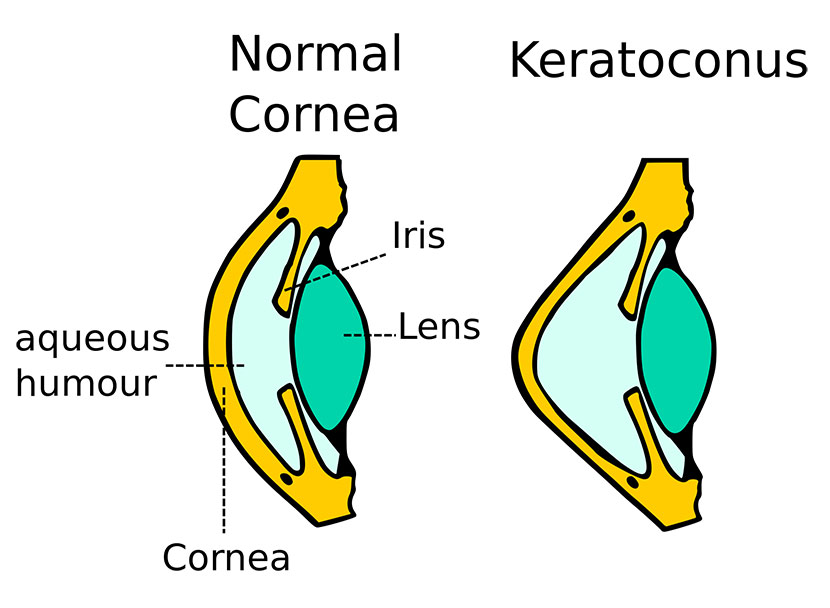
Understanding Keratoconus
Keratoconus is an eye disorder that affects the cornea and can cause a series of vision difficulties.
The disorder occurs when the small protein fibers in the eye (collagen) that help hold the cornea in place become weak, allowing the cornea to bulge. Once that happens, the cornea can slowly take on a cone shape and create a number of potential vision problems. The corneal changes, which usually begin in one eye and later the other, can happen quickly or take a few years to develop and can result in the appearance of halos around lights at night and blurred vision. While the disorder will affect both eyes, the degree to which the eyes are affected is not always the same.
The corneal changes can potentially make it impossible for the eye to focus without the aid of glasses or contact lenses. LASIK surgery is not recommended for anyone with even a mild case of keratoconus.
The degenerative disorder is usually detected in a couple ways. When the cornea takes on a cone appearance instead of a ball shape, the corneal surface becomes wavy, creating an irregular astigmatism.
As the cornea changes from a ball shape to a cone shape, the smooth surface becomes slightly wavy, creating an irregular astigmatism. The expansion of the cornea forward into the cone shape also causes nearsightedness.
Other symptoms that might become apparent are:
Sudden change of vision or double vision in just one eye
The appearance of triple ghost images
Near and far objects look distorted
The appearance of halos around bright lights or lights streaking
For your eye care professional to determine if you have keratoconus, a measurement of the curvature of your cornea is required. A keratometer, which shines a light pattern onto the cornea and its reflection provides a measurable image of the curvature of the eye, is often used. There are also computerized instruments that can create a 3-D map of the cornea offering eye care professionals even greater ability to accurately assess the potential for keratoconus.
Keratoconus treatment often begins with glasses, but contact lenses might be used if the glasses do not deliver satisfactory adjusted vision. In advanced cases of the disorder a corneal transplant will be necessary.




